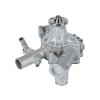Outsourcing
What is Outsourcing
The term "outsourcing" is often used interchangeably with "facilities management" as if the two concepts were identical. This is understandable, not merely because they have strong superficial similarities (both involve an external supplier for the provision of IT or other services, and both are measures frequently adopted in an effort to reduce the costs below those of providing the services in-house) but also because a complex outsourcing arrangement may involve elements of facilities management.
At its simplest, in facilities management a customer takes parts of its in-house functions and requests an external services supplier to manage them on its behalf. In this form, it can be seen as the management by an external supplier of a facility which continues to belong to the customer. Typical examples include the facilities management of cleaning or catering or security, where the external services supplier provides staff, equipment and everything else necessary to supply the service at the customer's site. By contrast, outsourcing takes the handing over of the service provision to an external supplier a stage further by the customer divesting itself of the business represented by the functions to be outsourced and selling this as a going concern to the supplier. Money therefore passes in two directions in the course of the transaction, since the supplier buys the business and the customer buys back a continuing service.
How is Outsourcing documented?
An archetypal outsourcing relationship is generally characterised by the combination of two very common transactions: a sale of assets (which may include the transfer of employees) to the supplier, and a supply of services back to the customer. In fact the two transactions may be set out in a single agreement, although, because the first is a one-off transaction in which only a few obligations (mainly warranties) have a continuing effect for a period after the sale whereas services provision requires a continuing relationship, the two parts of the transaction are often dealt with in separate documents.
The two parts of the transaction cannot be seen as independent of one another. In a simple asset sale agreement, among the principal objectives of the buyer are those of achieving the lowest price for the assets and the highest protection in terms of warranties if the assets turn out not to be as stated by the seller before the purchase. While this is still the case in the asset sale in an outsourcing transaction, the whole purpose of the sale of the assets is not that the parties each go their separate ways after what might have been an exacting and even acrimonious round of negotiations, but that the supplier ends up in possession of assets which are capable of providing the services on which the customer will be reliant in a long-term relationship with the supplier.
Why Outsource?
Outsourcing is a means to an end and not an end in itself. It does not absolve the customer from the task of careful monitoring and regular review of the relationship to ensure that the objectives of the outsourcing of the services continue to be achieved and that the arrangement continues to meet the customer's commercial strategy. Cost savings are clearly one objective which customers have looked to outsourcing to bring, and in some cases it is no doubt true that immediate financial constraints will have dictated a decision to outsource which may not be in the organisation's best long-term interests. The inherent constraints in the relationship, deriving from the degree of dependence which arises from the divestment to the supplier of the assets from which the service is provided, and the natural tension between the customer's striving for cost savings and the supplier's striving for profits, make the quality of post-contract management a key to success or failure.
Is there a difference between Outsourcing and the service provided by an Application Service Provider (ASP)?
Yes, an ASP provides its customers with access to application software which is centrally run by the ASP at its own premises and on its own CPU. An ASP does not take a transfer of any part of its customers' business, whether in the form of staff, premises or hardware.
What are some of the benefits of Outsourcing?
The arrangements can reduce the range of IT activities which the customer needs directly to engage in, and also reduce bureaucracy and management effort; The arrangements may increase the customer's flexibility in workload planning, the focus of its management effort and its ability to concentrate on strategic issues and value-added services; The customer may become more client-oriented; The arrangements may permit decentralisation, downsizing and better control of resources; IT costs may become more predictable, and overheads and other previously fixed costs converted into variable costs.
& .. and some of the risks?
More management time may be taken up in dealing with disputes and other aspects of contract management;
There may be a perceived loss of control and a feeling of over-dependence on a single supplier;
In-house IT staff may feel that they had less influence on IT strategy and policy, and feel they were becoming deskilled in their specialist field and losing professional competence;
The supplier may fail to appreciate the customer's operational and strategic needs;
In-house staff may feel insecure, uncertain of their role, and a "them and us" culture may evolve;
The arrangement may not have been cheaper than what could have been achieved in-house.
These risks need to be addressed head on both managerially and in the contractual documents.
What happens when staff are transferred to the outsourcing contractor?
Hong Kong law does not provide for any automatic or deemed transfer of employment on the sale of the employer. So, where part of the business is 'sold' to an outsourcing contractor, there must be express agreement between the existing employer and the employees as to any transfer of employment to the contractor. Indeed, unless the provisions of Part VA of the Employment Ordinance are closely followed, severance monies are likely to be payable to an employee. But, employees need to be employed for at least 24 months (working (generally) at least 18 hours per week) in order to qualify for such severance pay.
What terms of employment must the outsourcing contractor provide to transferring staff?
The new terms must be comparable but need not be exactly the same. Where the new terms and conditions do differ then the new offer must:
(a) Constitute an offer of suitable employment in relation to the employee
(b) Constitute an offer no less favourable than under the previous contract.
Must the parties consult with the existing staff?
There are no statutory or other rights to collective consultation or bargaining in Hong Kong. However, this is not to say that consulting with employees is not a good idea so that all involved are aware of any changes to be implemented.
How do I define what exactly is to be Outsourced?
Clearly defining the scope of what is included in the outsourced services permits certainty in establishing the interfaces between the outsourced services and those which are retained or provided by other suppliers. The greater the number of these interfaces, the greater the likelihood of uncertainty as to where responsibility for any failure in service provision lies. This uncertainty can be reduced by, wherever possible, giving the supplier responsibility for managing all other relevant third party suppliers. This arrangement locates the responsibility for problem diagnosis and resolution in one place and reduces the risk of discontinuity of the service while any attribution of fault between the supplier and the customer is argued out.
There are two ways in which this responsibility can be passed over to the supplier; if the supplier assumes the role of main contractor, liability for third party failure attaches to the supplier; if, however, the supplier only assumes the role of contract manager, the contractual relationship remains between the customer and the third party, and if the supplier cannot resolve a problem, it rests with the customer to find a solution.
How is the scope and quality of the services defined?
The contract must set out the scope of the services and the precise service levels to be achieved in a series of output specifications which, if properly drafted, leave neither side in any doubt as to what is required. The content of these specifications will vary according to circumstances, but in a typical IT outsourcing agreement they would include:
Detailed descriptions of the services and the service levels themselves (for example the maintenance and support of systems and networks);
Clear requirements for areas such as system performance, limits on down time, IT strategic development, other consultancy services and business continuity planning;
Requirements for managing the services and the contract generally (such as procedures for monitoring performance levels, data quality and security, fault reporting and capacity management).
What happens if a dispute arises with the Outsourcing contractor?
Outsourcing suppliers are experienced in managing outsourcing relationships around the world and, however complex the dispute, the supplier is likely to have seen it all many times before. It is in both sides' interests to have in place a contractual escalation procedure ensuring that disputes do not simmer unresolved at a low level in the management structure, causing a deadlock to the detriment of the provision of the service. At the culmination of the escalation procedure between the parties, there must be provision for reference to an external independent third party to resolve the dispute definitively. The use of alternative dispute resolution techniques is now common in outsourcing arrangements, particularly because their purpose is to find a solution to a problem not merely a winner and loser. Mediation, and similar techniques are promoted by the Hong Kong Mediation Council which can be contacted at adr@hkiac.org.
What happens at the end of the term of the Outsourcing contract?
Both sides have an interest in ensuring that the relationship survives the inevitable disputes and remains positive. The worst scenario for the customer to contemplate is that it has become so dependent on the supplier that the costs and difficulties of transferring the service to an alternative supplier are prohibitive. This scenario can be avoided only by the agreement and specification at the contract stage of an orderly transfer procedure on termination. This gives the customer reassurance that it is not locked in to one supplier, so that termination is a practicable option, and that on termination there is the best prospect for a seamless transfer of the service with as little disruption as possible.







